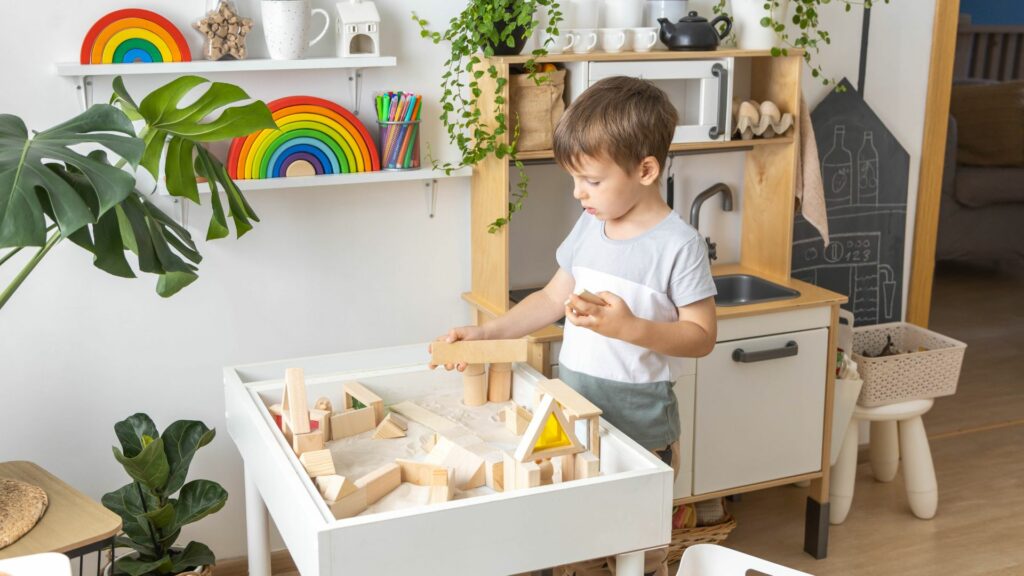Finding out or confirming your child is autistic can trigger a range of emotions. You may feel relief that you finally have the answers to why your child has been struggling, or you might be guilty about not picking up on this sooner or anxious about what this means for the future.
You may be wondering about what this diagnosis means for you, your family, and your lifestyle, and find yourself delving into all kinds of books, articles and social media on ‘how to help your autistic child’.
How you feel is completely valid and natural, and processing these feelings is an important step.
Likewise, educating yourself and hearing about other people’s experiences can be extremely useful, but it’s also important not to overwhelm yourself, or your child, by trying to do too much at once.
As an occupational therapist, the most common question I am asked once a diagnosis is given is, ‘What now?’. While there’s no one-size-fits-all answer to this question, I often find myself directing parents and guardians towards four key areas proven to help autistic children and their families following a diagnosis.
Be a detective
This is my ultimate tip for families raising autistic children. There’s a lot of information out there about strategies to help autistic children, and it can be difficult to choose which ones are suitable for your child.
Keeping track of the things your child engages with and what they avoid can be the key to unlocking what they need. It can also help you understand what they find soothing and comforting.
For example, do they like small spaces or burying in the sofa cushions? This could be a sign that they might benefit from deep pressure, which is a type of therapy that uses pressure via touch to help someone with a sensory sensitivity. It can be used on its own, or as part of a wider range of therapies and can help autistic people when they’re feeling stressed, anxious or overloaded.
Another example could be if you notice that your child likes to climb or hang off furniture. This could indicate a sensory processing challenge that might benefit from ‘heavy work’, which is any activity that pushes or pulls against the body. Heavy work helps by providing additional physical input to support a child’s sensory processing needs, specifically, the senses responsible for controlling body awareness, self-movement, and force.
Helping a child with sensory processing needs to understand where their body is and what it should be doing can make them feel more oriented in space, which can calm anxiety and stress. It can also reduce the risk of meltdowns if their sensory issues are triggered.
Once you have noticed these things about your child you can focus your research and introduce safe and accessible activities.
Keep a meltdown checklist
I often speak with parents and teachers about meltdowns that seemingly ‘came from nowhere’. The important thing to understand about meltdowns is that they often come from overwhelm. Therefore, it can help to consider what happened directly before a meltdown/overwhelm and also the events in the day that may have contributed.
Keeping a diary can help, but might not be practical in your busy daily life. Instead, it may help to have a checklist to keep track of meltdowns and the potential triggers. This could include things like, what time the meltdown happened, whether there were any changes to your child’s environment or routine, or was there a sensory factor?
A record of these things can help you unpick what contributed to your child becoming overwhelmed and how you might reduce stressors in the future.
Creating a neurodivergent-friendly home
Creating a safe and functional home can have a huge positive impact on an autistic child’s development, comfort and lifestyle. But it’s important to remember that autistic people generally don’t like or manage change well. So while suddenly transforming your home into a soft play space with lots of visual aids may seem like a good idea, it can potentially lead to confusion and overwhelm.
My first tip, ‘be a detective’, speaks about the importance of paying close attention to what your child engages with and tends to avoid. Doing this will help you become an expert in your child, giving you lots of ideas on the best way to support your child at home.
If you’ve already done this, fantastic. If not, don’t worry. It’s never too late to get started. Here’s my advice on turning your home into a neurodivergent-friendly environment.
- Consider your child’s sensory sensitivities and needs. For example, if your child struggles with bright lights, switching to warm, less intense bulbs and using lamps instead of the main ‘big light’ can help. If your child becomes overwhelmed or distracted by smell, you might want to try opening the kitchen window and closing doors when cooking to stop smells moving around the house. For children who react strongly to certain sounds, listening to music with headphones and reducing noise can help.
- Consider your routines. Does the household routine best suit the family or have routines been adopted generationally or due to social expectations? Think about what suits your family, for example, if your child finds bathtime stressful, bathing first thing in the morning or just before bedtime will probably impact their day or sleep. Instead, adjusting the routine so they bathe later in the afternoon or earlier in the evening can give your child time to readjust and reset before bed.
- Use clear, literal and unambiguous language. While many autistic children speak with ease and have no difficulty using language, even those with good language skills can struggle to understand abstract language, sarcasm, and metaphors. It’s also common for autistic people to take language literally. To help, try to use clear, direct, precise and unambiguous language. Avoid dropping hints and using idioms, “break a leg”, or “she let the cat out of the bag”. If you do accidentally use one, explain it.
Remember to care for yourself and your other children
It may sound cliche, but if you don’t take care of yourself, you won’t be in the best place to care for your child. Therefore, it’s important to be mindful of your own needs, particularly if you are neurodivergent yourself.
A concern for many parents of autistic children is how to care for their non-autistic children to ensure they don’t feel left out or second best. You might also be wondering how to help your other children learn more about their autistic sibling’s needs.
Talking to your other child can help them understand their sibling’s differences, strengths and needs, but it’s important to remember they are navigating a new concept just as you had to, but without the benefit of a fully matured brain. Therefore, it is reasonable to expect that arguments, jealousy and sibling rivalry will probably still occur and are completely natural.
Siblings of autistic children often offer a lot of support and care, and may be the go-to for your autistic child when they are at school. Therefore, it’s important to give them the support to manage these extra responsibilities and give them the tools to set boundaries and keep time separate for themselves so they can explore their own needs and relationships.
However you navigate the time after discovering your child is autistic, it’s important to be kind to yourself. There will likely be a certain amount of trial and error and not everything you try will be successful. The important thing is to keep trying and have your child’s best interest at heart.





